In professional diving, time and energy are money. Every survey cut short by fatigue, or every minute of bottom time wasted fighting a current, directly increases your project's costs and risks. It is time to treat the Diver Propulsion Vehicle (DPV)—often referred to as a professional sea scooter as a core productivity tool. It allows you to cover more ground, save your energy for the actual mission, and significantly improve safety in challenging environments. This guide provides a clear action plan for selecting and using a DPV to genuinely boost your mission success rate and economic efficiency.
The DPV Advantage: Better Efficiency, Greater Safety
A professional underwater scooter isn't a toy; it's a tool that directly boosts your efficiency and safety, delivering a clear return on investment. This section explains exactly how a DPV helps you get more work done and reduce on-site risks.
Get More Done: Boost Your Work Efficiency
On any project, efficiency means finishing the job faster with less effort. A DPV is a key tool for achieving this.
Triple Your Coverage Area
On large jobs like surveys or searches, a DPV massively increases your range. In 30 minutes, a diver finning at a work pace (around 0.5 m/s) covers about 900 meters. With a DPV at a modest 1.5 m/s, you cover 2,700 meters in the same time, allowing you to complete projects in far fewer dives.
Less Commuting, More Working
Time spent swimming to the worksite is wasted bottom time. A DPV cuts that transit dramatically. A five-minute swim can become a 90-second ride, saving precious no-decompression time for the actual task—a critical advantage on deep dives.
Arrive Fresh, Work with Precision
Fighting currents or hauling gear drains your energy and air. A fatigued diver loses focus and makes more mistakes. A DPV does the heavy lifting, so you arrive at the job site fresh and ready to perform.
Haul Heavy Gear and Assist Teammates
Many professional dives involve moving heavy equipment. A high-thrust DPV is designed for this. A powerful unit like the Sublue Vapor (46 lbf thrust) can easily handle a fully loaded diver or tow a teammate, making logistics much simpler.
Dive Safer: A Key Tool for Reducing Risk
A DPV is a practical piece of safety equipment that helps you manage common underwater hazards.
Overcome Strong Currents
Strong currents drain energy and can separate a team. A DPV provides the power to hold your position, push against the flow, or make a safe exit. It turns a high-risk scenario into a controlled operation.
Faster Emergency Response
In an emergency, a DPV is a critical rescue tool. You can quickly reach an injured or tired diver and tow them to safety. In caves or wrecks, it allows for a rapid evacuation from hazards like a collapse or silt-out.
Lower Physical Stress and Health Risks
Hard work underwater increases your breathing rate and CO₂ levels, raising the risk of narcosis and DCS. A DPV manages the workload, keeping your breathing calm and your body under less stress. This creates a safer dive profile.
Improve Your Focus and Decisions
When you're not focused on kicking, you can pay better attention to your gauges, navigation, and team. This heightened awareness helps you make smarter decisions and spot problems early.

How to Choose the Right DPV for the Job
The right DPV is the one that best fits your mission profile. Instead of getting distracted by top speeds or flashy features, the selection process should start with a clear analysis of your work requirements.
Step 1: Match Performance Specs to Your Mission Demands
Start by answering a few key questions about your typical projects. The answers will point you to the most important technical specifications.
How much power do you really need? (Thrust vs. Speed)
If you carry heavy gear or work in currents, prioritize high thrust. Thrust (lbf or kgf) is the raw power to push through water and overcome drag. A high-thrust unit like the Sublue Vapor (46 lbf) will maintain performance even when hauling survey equipment or towing a buddy.
If you cover long distances in calm water, balance speed and battery efficiency. High top speed is less critical than a sustainable cruising speed that maximizes range.
How long are your operational days? (Battery System)
If you perform multiple dives per day, a swappable battery system is non-negotiable. Models like the Sublue Navbow and Vapor let you swap a dead battery for a fresh one in seconds, eliminating hours of charging downtime between missions. Plan on purchasing enough spare batteries to last a full day.
Check the real-world continuous runtime, not just the "max" time. Look at the manufacturer's specified runtime for the speed you'll actually use.
Where will you be working? (Depth Rating & Reliability)
For deep dives, choose a depth rating with a significant safety margin. Never operate a DPV close to its maximum rated depth.
For complex environments (wrecks, reefs, kelp), look for robust construction. A durable body and a protected, anti-entanglement propeller design, like a pump jet, can prevent mission-ending failures.
Is equipment loss a concern? (Buoyancy)
Always choose a DPV with slightly positive buoyancy. If you need to let go of the unit, it will float slowly towards the surface for easy recovery. This is a simple feature that prevents the loss of thousands of dollars of equipment.
Step 2: Select Features That Streamline Your Workflow
Once you've narrowed down the performance specs, evaluate the features that will directly impact your day-to-day work.
Do you need to perform precise tasks? (Handling & Control)
For close-up inspections or filming, you need fine control. Look for features like a variable speed trigger and responsive steering. An option for one-handed operation, like the DTC kit of Navbow, is also crucial as it frees up your other hand for tools or a camera.
Will you be carrying extra equipment? (Mounting Points)
If you use cameras, lights, or sensors, you need standardized mounts. A DPV should serve as a work platform. Ensure it has a solid mounting system to turn it into a versatile tool for data collection and documentation.
Do you need to monitor your DPV's status constantly? (Data Display)
For professional work, a clear and simple data screen is essential. You need to see battery level, speed, and depth at a glance. A large, bright LCD display is a critical feature, not a luxury.
Does your work require detailed reports? (Data Logging)
If you generate dive logs for clients, smart features save time. Systems that can automatically log and export data like depth, temperature, and location via an app can significantly speed up your post-dive reporting process.
How to Plan and Execute a DPV Dive
A DPV changes how you manage gas, navigate, and handle emergencies. Integrating it properly into your Standard Operating Procedures (SOPs) is essential for both safety and mission success.
Before You Hit the Water: DPV Mission Planning
A successful DPV dive starts with a solid plan on the surface.
Define Your DPV Strategy
Your DPV is a tool to achieve a specific objective. Plan its use accordingly.
-
For Inspections: Plan a linear route along the target, like a pipeline or seawall.
- For Area Searches: Design a specific pattern, like a parallel track or an expanding grid, to ensure full coverage without overlap.
- For Transit: Plot the most direct and safest route to and from the worksite.
Rethink Your Gas Management
The standard "Rule of Thirds" (one-third out, one-third back, one-third reserve) is too simple for DPV dives. Your gas consumption will vary significantly between high-speed transit and low-speed work on-site. A better approach is to plan your gas for each phase of the dive:
- Gas needed for transit to the worksite.
- Gas needed while working at the site.
- Gas needed for transit back from the worksite.
- A non-negotiable safety reserve.
This detailed plan provides a much more accurate picture of your actual gas requirements.
Plan for Failure: Key Emergency Protocols
Your dive plan must include clear, DPV-specific emergency procedures. Everyone on the team must know these protocols.
- Unit Failure: If a DPV fails, the diver signals the team. The first step is a quick assessment—is it a simple fix or a total failure? If it fails completely, the plan should dictate whether the diver is towed by a teammate or safely abandons the unit to be retrieved later.
- Battery Depletion: This should never be a surprise. Your plan must include a clear "turnaround" point based on battery life (e.g., begin the return trip when the battery hits 50%). Always have a backup plan, which is typically finning back or getting a tow.
- Diver Separation: A DPV allows for a much faster search. The protocol should be: stop, look, and listen for one minute. If the buddy is not found, begin a pre-determined search pattern, using the DPV to cover the area efficiently.
In the Water: Best Practices for DPV Operation
Efficient and safe DPV use depends on technique and coordination.
Maintain Proper Trim
A horizontal, streamlined body position minimizes drag. This is the single most important factor for maximizing your DPV’s battery life and speed. Keep your hoses and gear tucked in to avoid creating extra resistance.
Use Clear Team Communication
Standard hand signals may not be enough. Establish a set of simple, DPV-specific signals before the dive. Key signals should include:
- "Unit failure / Problem"
- "Increase speed / Decrease speed"
- "Battery level is low"
- "Turnaround / End the dive"
Also, agree on team formations (e.g., side-by-side or lead-and-follow) and maintain a safe distance to avoid collisions.
Use Your DPV for Precision Navigation
A DPV moves at a consistent, known speed. This makes navigation by time and compass much more accurate. You can calculate the time needed to cover a specific distance on a compass heading, allowing you to execute precise search patterns and routes.
Follow Safe Towing Protocols
Towing another diver or heavy equipment requires a clear procedure.
- Always use a proper tow line with a harness or a secure attachment point.
- The DPV operator is in charge of speed and direction.
- The towed diver is responsible for their own buoyancy and trim.
- Keep speeds low and maintain clear communication.
This disciplined approach to planning and execution is fundamental to professional DPV operations. A well-defined set of procedures ensures every dive is conducted with maximum safety and efficiency.

Maintenance and Logistics: Keeping Your DPVs Mission-Ready
A successful DPV operation doesn't end when you surface. To ensure your equipment is always reliable, you need disciplined maintenance routines and smart logistical planning.
Essential Maintenance Routines
These simple procedures are the foundation of DPV reliability. Make them a mandatory part of your team's SOPs.
Post-Dive Checklist (After Every Use)
- Rinse Thoroughly: Immediately rinse the entire unit with fresh water after every dive, especially after use in salt water. This prevents corrosion and salt buildup.
- Inspect the Propulsor: Check the propeller or pump jet for any entangled line, seaweed, or debris. A fouled propulsor can strain the motor and damage seals.
- Check the Main Seals: Visually inspect the primary O-rings and sealing surfaces for any nicks, dirt, or damage that could cause a leak.
- Protect Contacts: After the unit is clean and dry, apply a thin layer of silicone grease to the metal contacts on both the battery and in the battery compartment. This prevents corrosion and ensures a reliable connection.
Battery Care and Transportation
Proper battery management is key to long service life.
- Charging: Always follow the manufacturer's instructions. Avoid leaving batteries on the charger for extended periods after they are full.
- Storage: For long-term storage, do not leave batteries fully charged or fully depleted. Store them at a partial charge (around 50-60%) in a cool, dry place.
- Air Travel: Transporting large lithium batteries is highly regulated. Batteries are classified by Watt-hours (Wh). Most airlines allow batteries under 100Wh in carry-on luggage. Batteries between 100Wh and 160Wh require airline approval. Batteries over 160Wh are generally forbidden in passenger luggage and must be shipped as Class 9 Dangerous Goods cargo. Always check with your airline well in advance of travel.
O-Rings: Your First Line of Defense Against Flooding
A failed O-ring is the most common cause of a flooded, destroyed DPV. Treat O-ring maintenance as a top priority.
- Inspect Before Every Assembly: Before sealing the unit, carefully inspect the O-rings for any hair, sand, dirt, or damage.
- Clean and Lubricate: Gently wipe the O-rings and sealing surfaces clean. Apply a very thin, even layer of the manufacturer-recommended silicone grease. Too much grease can attract debris and cause a bad seal.
- Replace Regularly: Replace O-rings at least once a year, or immediately if you see any signs of cracking, stretching, or damage.
Team Preparedness: Gear, Spares, and Skills
For professional teams, individual maintenance is not enough. You need a team-wide system for logistics and training.
Plan for Multi-Day Operations
Running out of power can shut down an entire day of work. To prevent this, calculate your daily battery needs based on the number of planned dives and their duration. The best practice is to have enough fully charged spare batteries for the entire day's operations, along with a charging station to prepare for the next day.
Standardize Your Equipment
Having the entire team use the same DPV model offers huge advantages.
- Interchangeable Parts: Batteries and spare parts are interchangeable, simplifying logistics and repairs in the field.
- Consistent Performance: Every team member knows exactly how the DPV handles, which is crucial during complex maneuvers or emergencies.
- Simplified Procedures: Training, maintenance, and emergency protocols are the same for everyone, making the team more coordinated and effective.
Make Training a Requirement
Formal training is non-negotiable for professional teams. Every diver who uses a DPV must be certified and proficient in its operation, including:
- Basic and advanced handling skills.
- Emergency procedures like towing and managing a failed unit.
- Field maintenance and troubleshooting.
Schedule regular drills to keep these skills sharp. A well-trained team operates more safely and efficiently.
Re-evaluate Your Underwater Workflow!
A professional DPV is a productivity tool, not just another piece of gear. Proper selection, planning, and maintenance turn it into a true asset for your team. This strategic approach leads directly to shorter project timelines, lower operational risks, and a tangible return on investment. Integrating a DPV into your operations creates a more efficient, capable, and safer dive team.
FAQs About Professional DPV Use
Q1: Is a professional DPV worth the high cost?
Yes. The return on investment is measured in efficiency. A DPV lets your team cover more area in fewer dives, saving significant time and labor costs. It also reduces risk by helping divers manage currents and respond to emergencies, preventing expensive delays or accidents. It's a direct investment in productivity.
Q2: Can I use a recreational DPV for professional work?
It's not recommended. Recreational models typically lack the thrust to carry heavy gear, use non-swappable batteries that cause hours of downtime, and are less durable. For reliable performance on a demanding mission, you need a tool specifically built for the job.
Q3: Is special training required to use a DPV for work?
Yes, formal training is essential. Professional use goes beyond basic operation. Training must cover DPV-specific gas planning, emergency procedures like towing and managing unit failure, precision navigation, and clear team communication to ensure everyone operates safely and effectively.

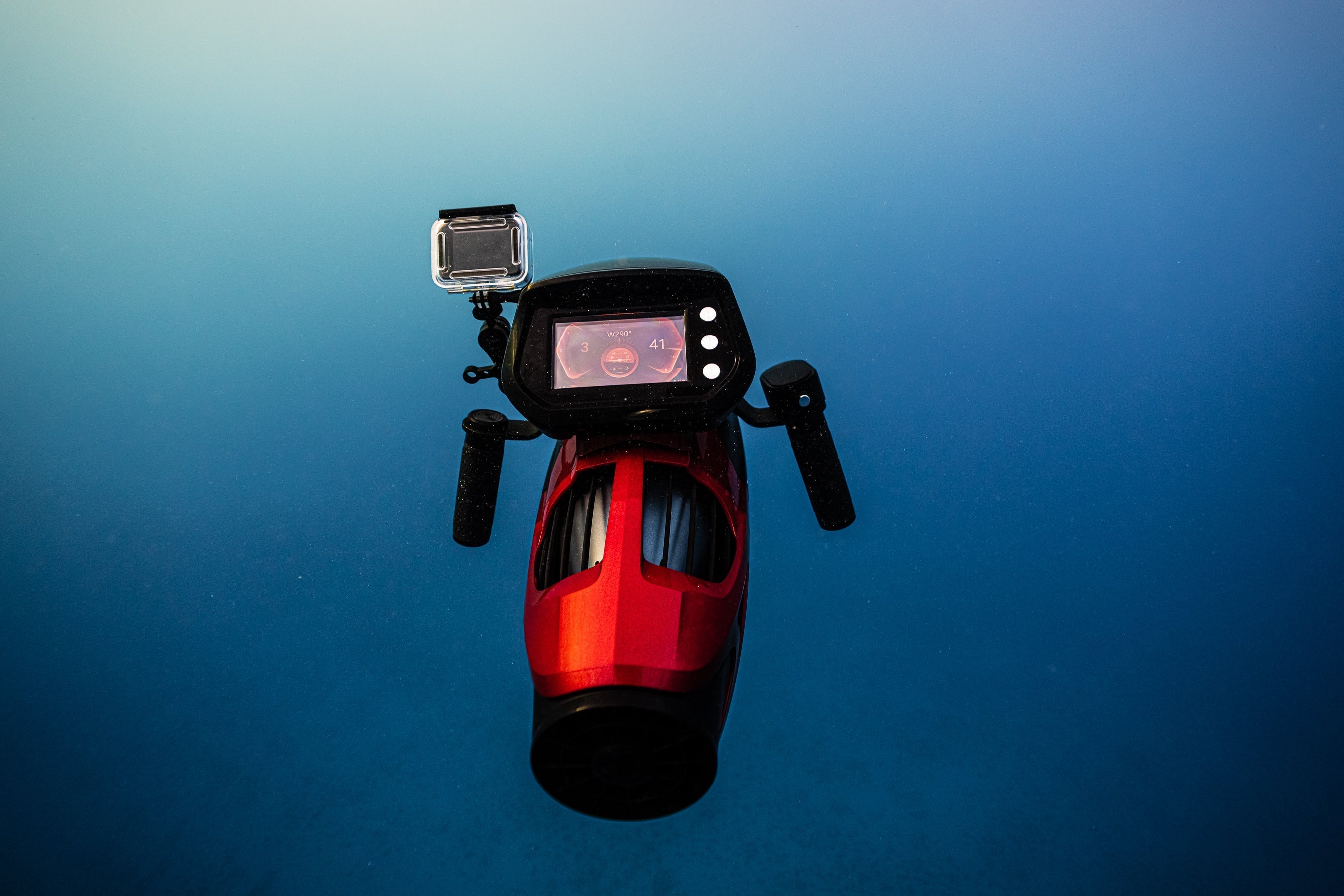


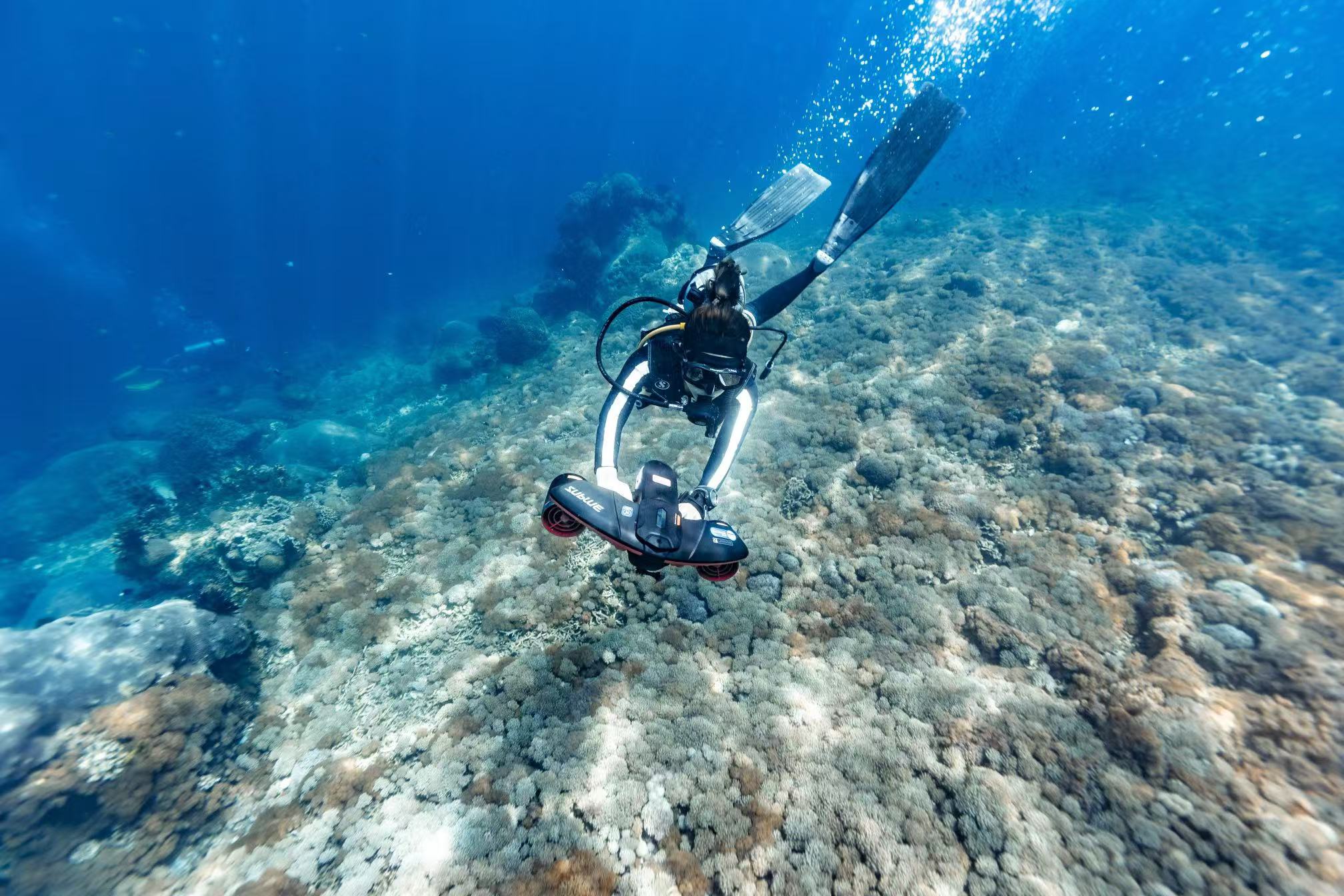
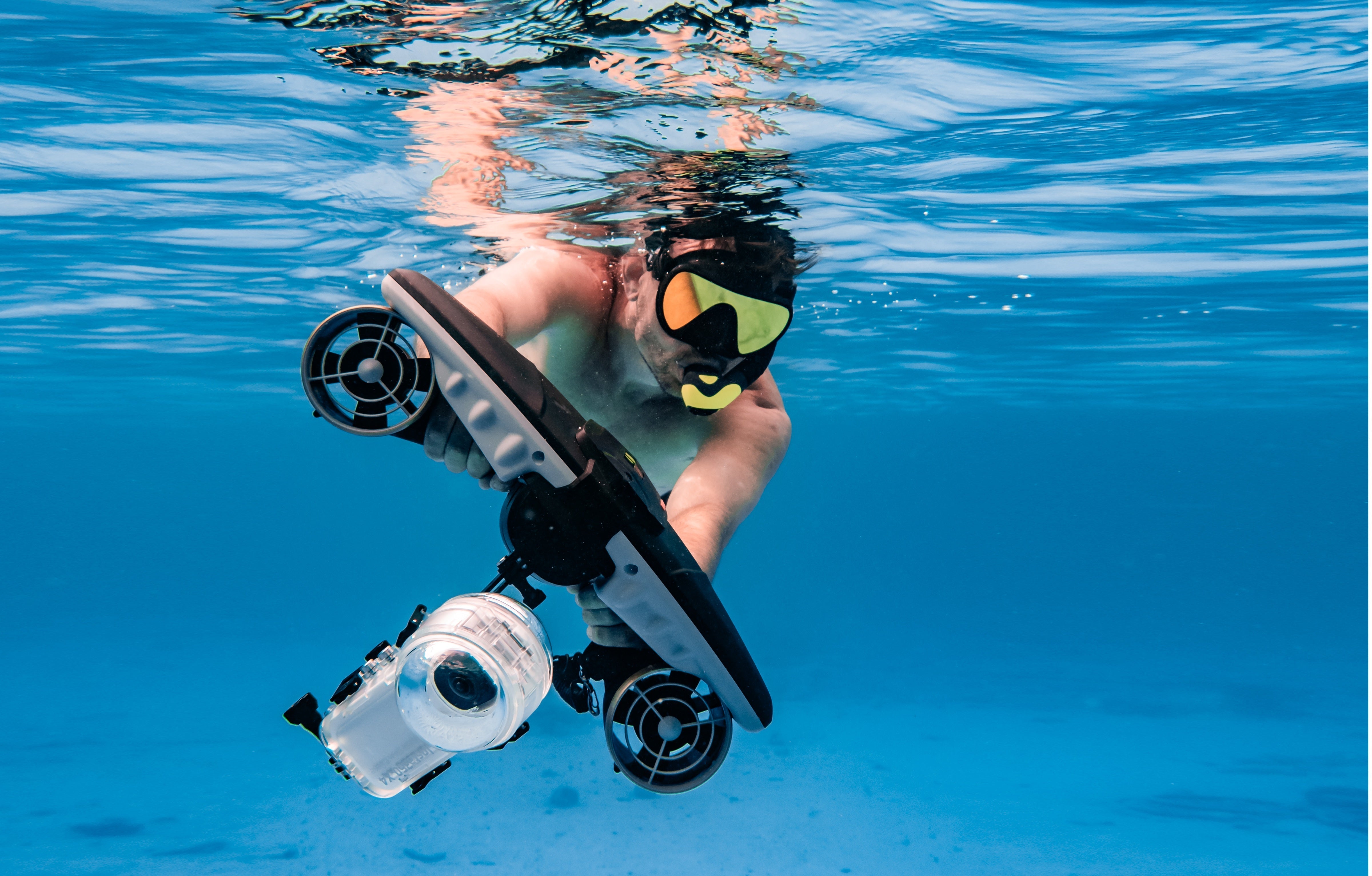
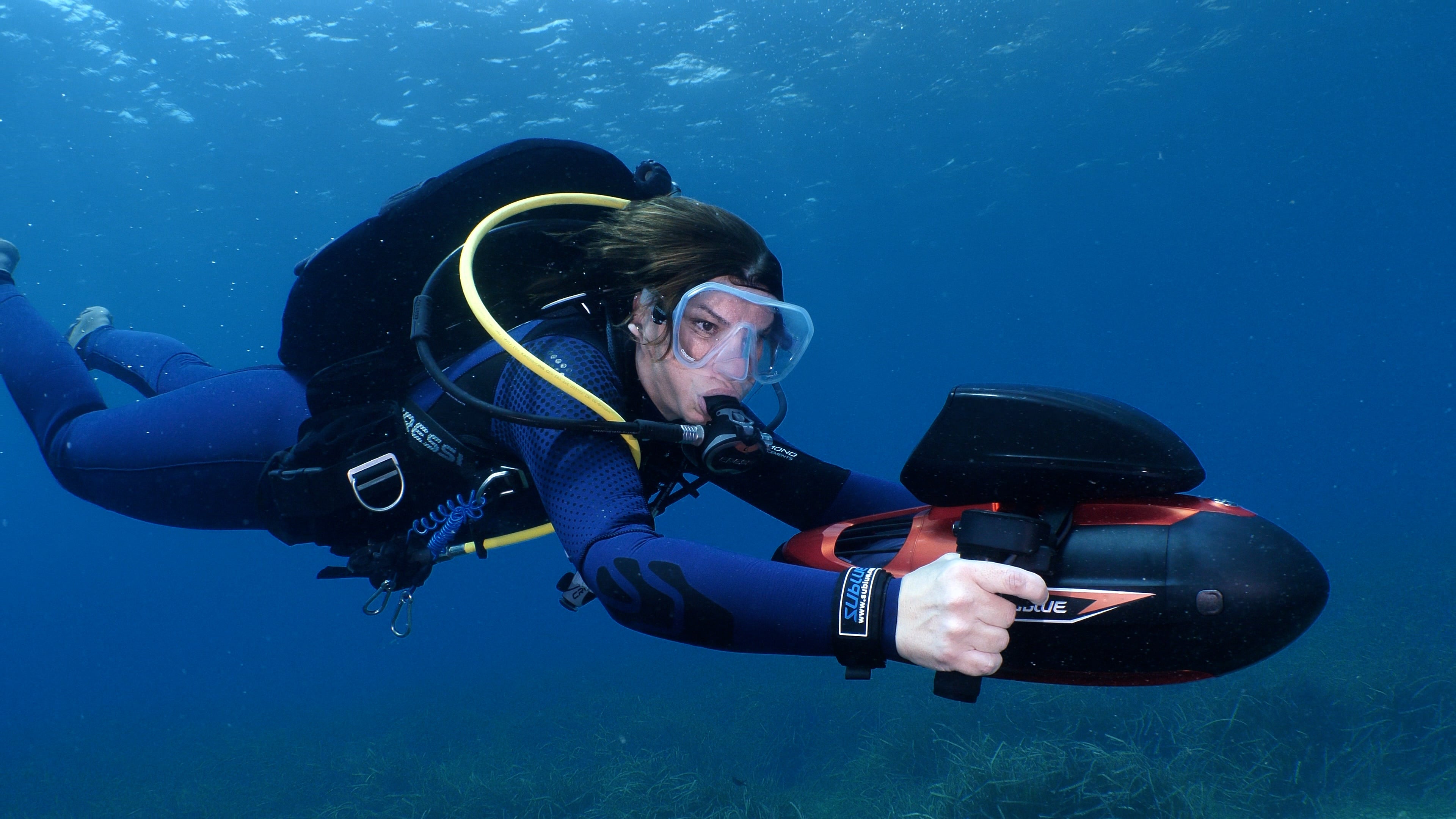
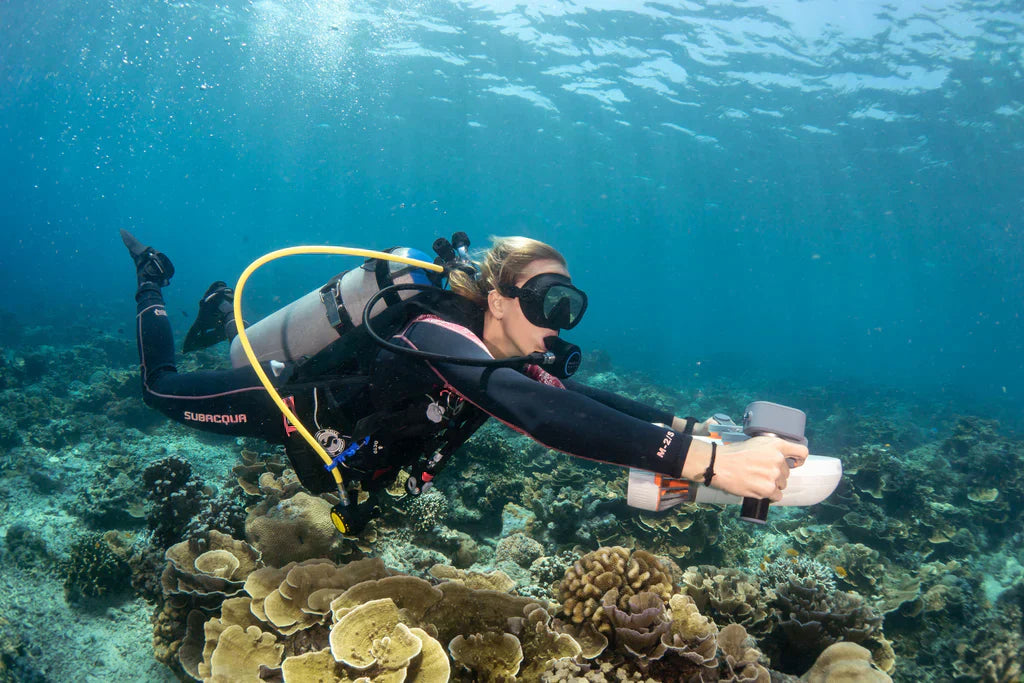
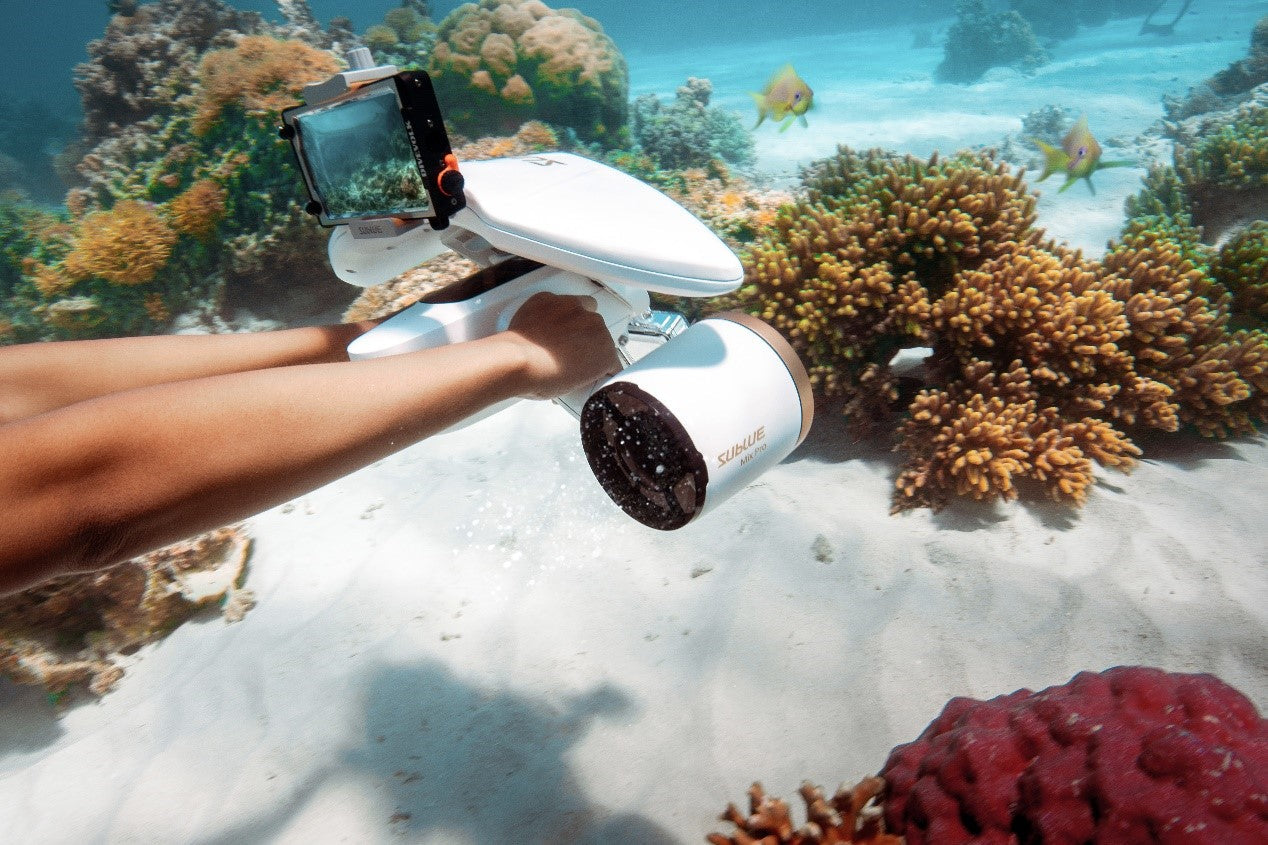
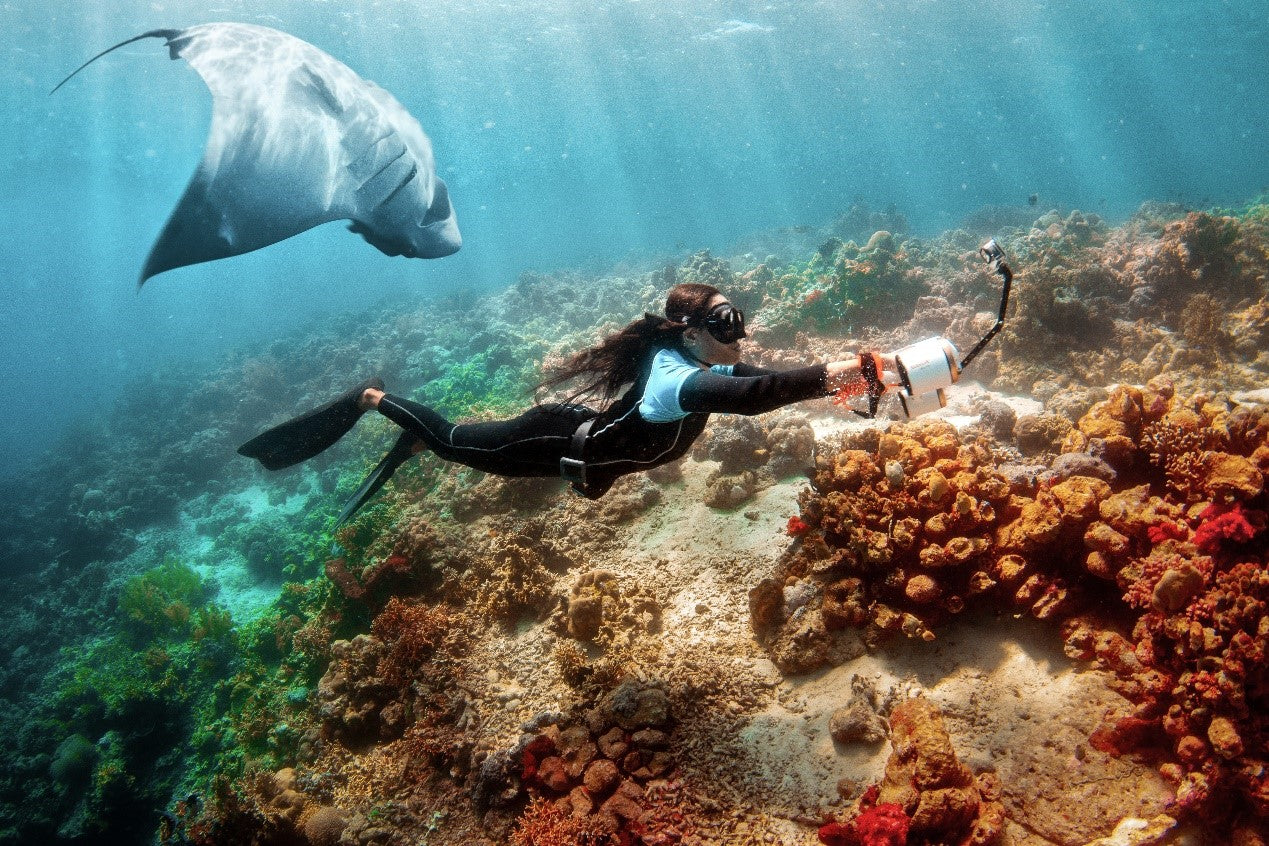
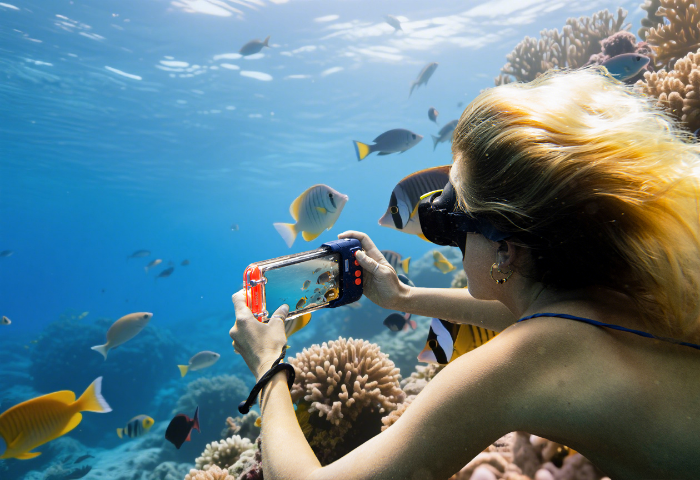
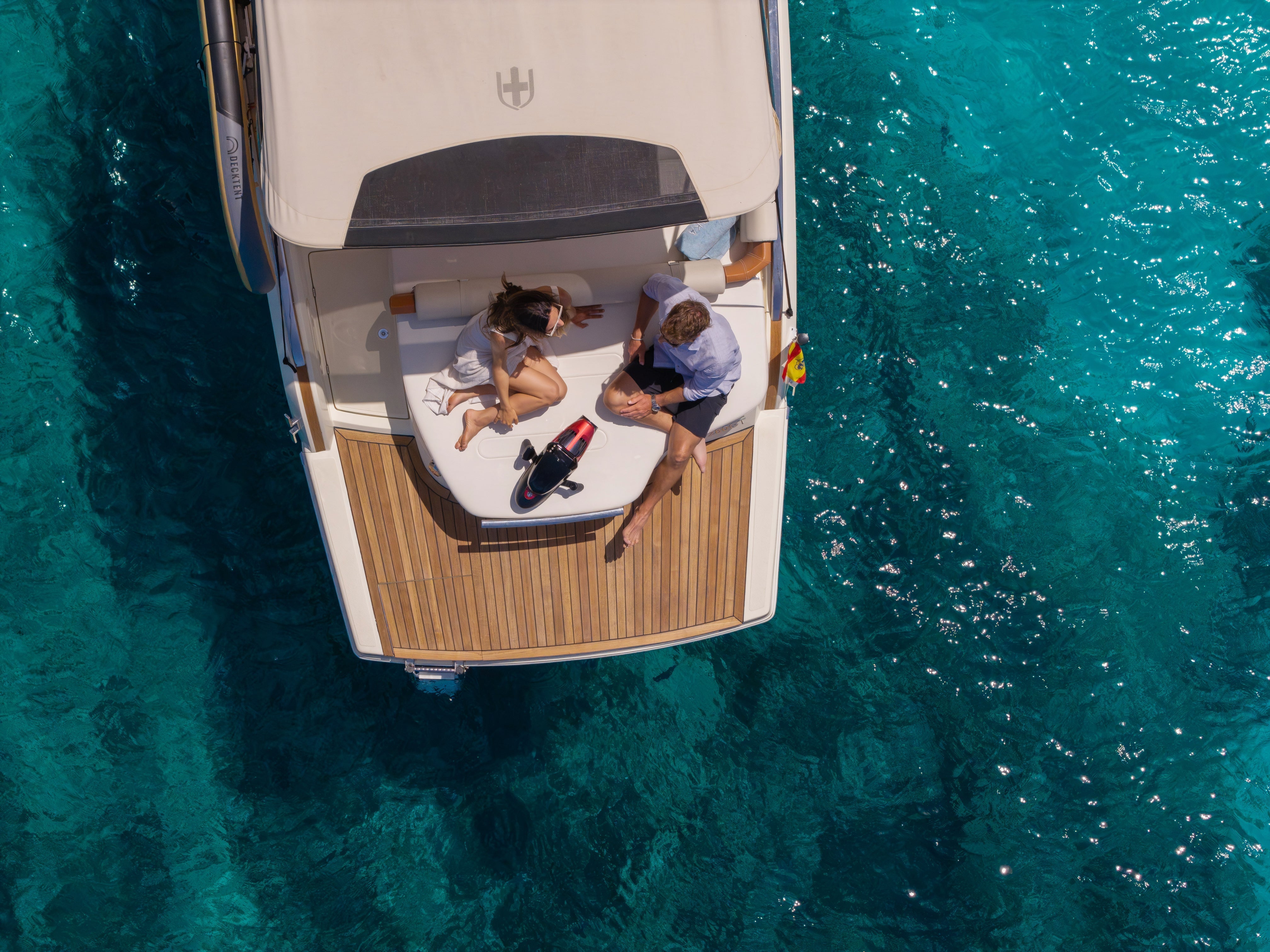
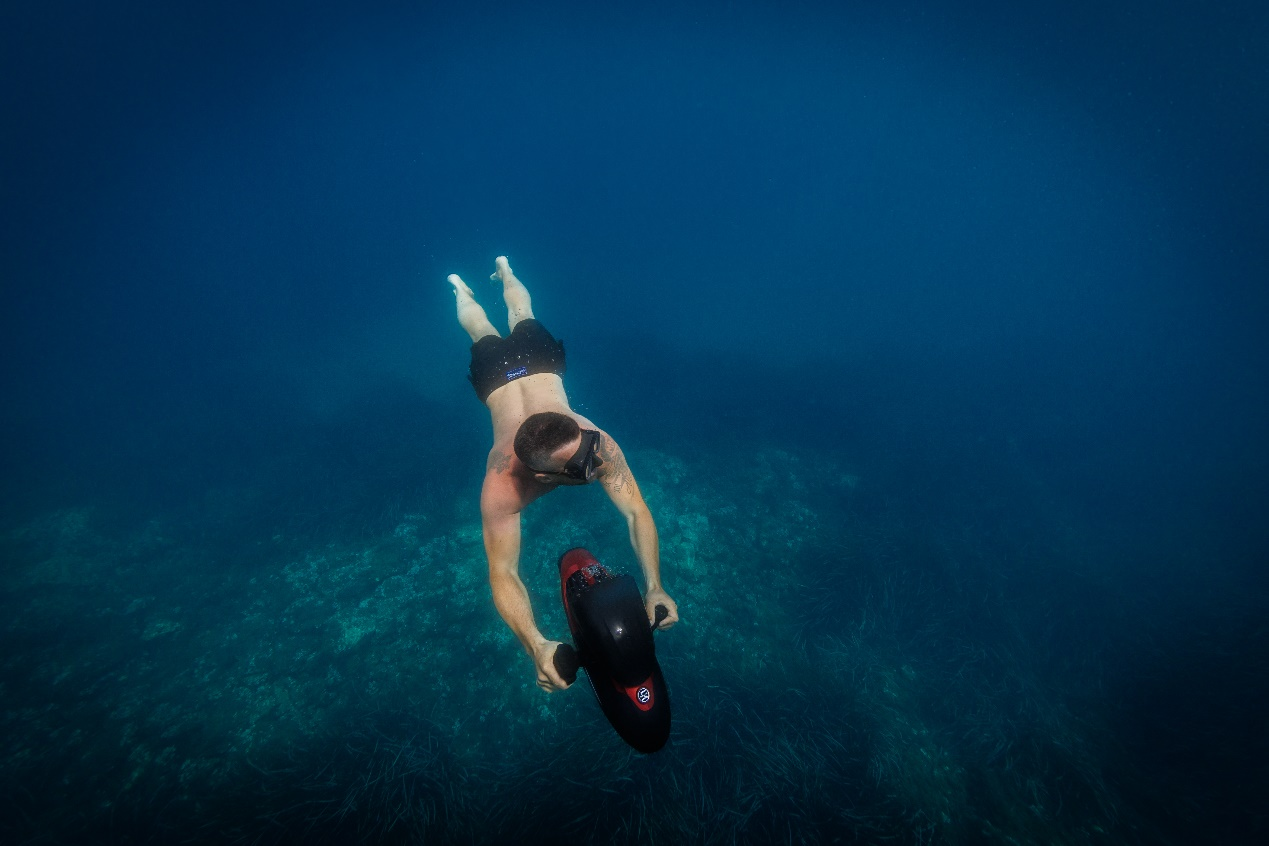
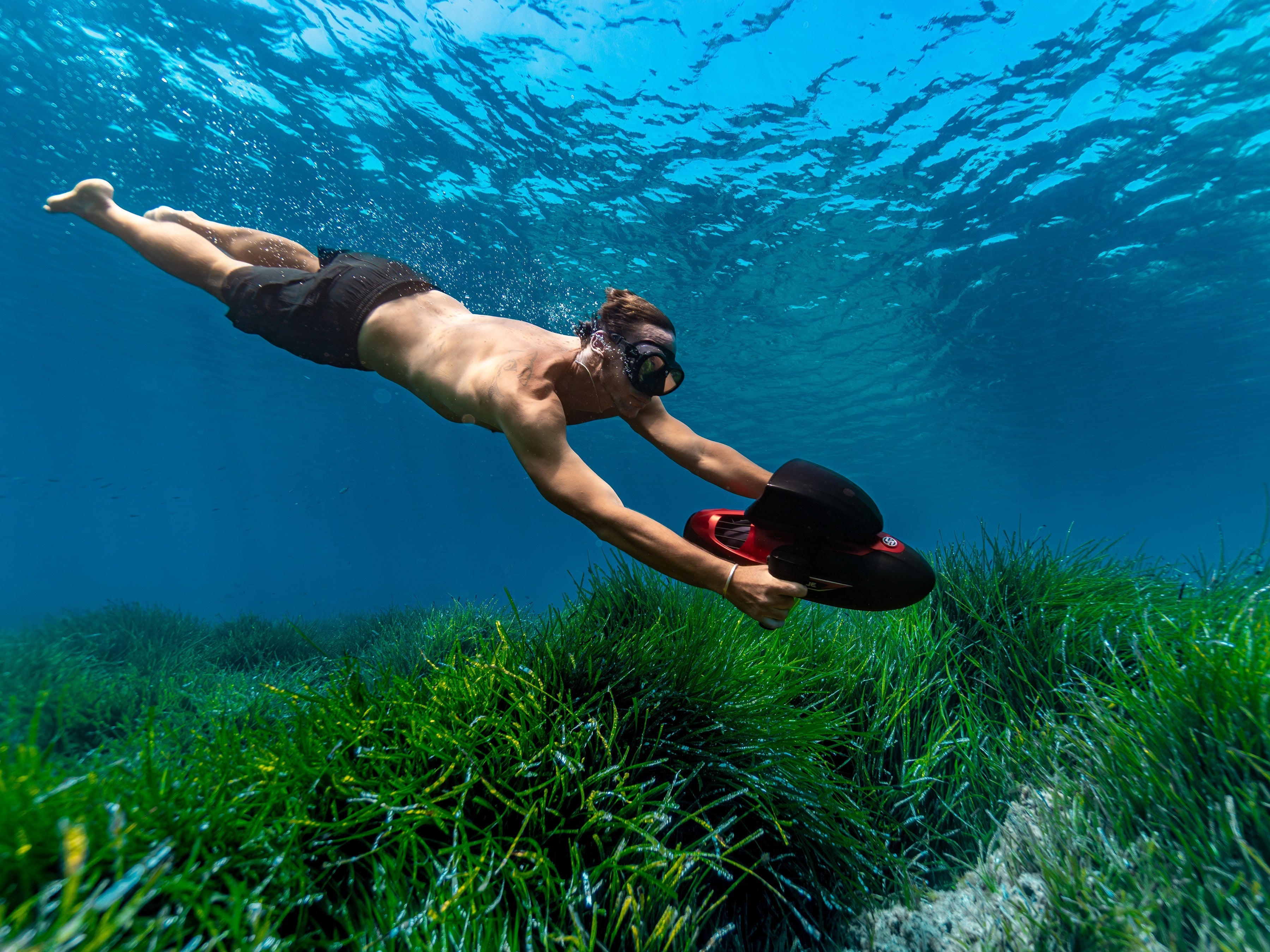
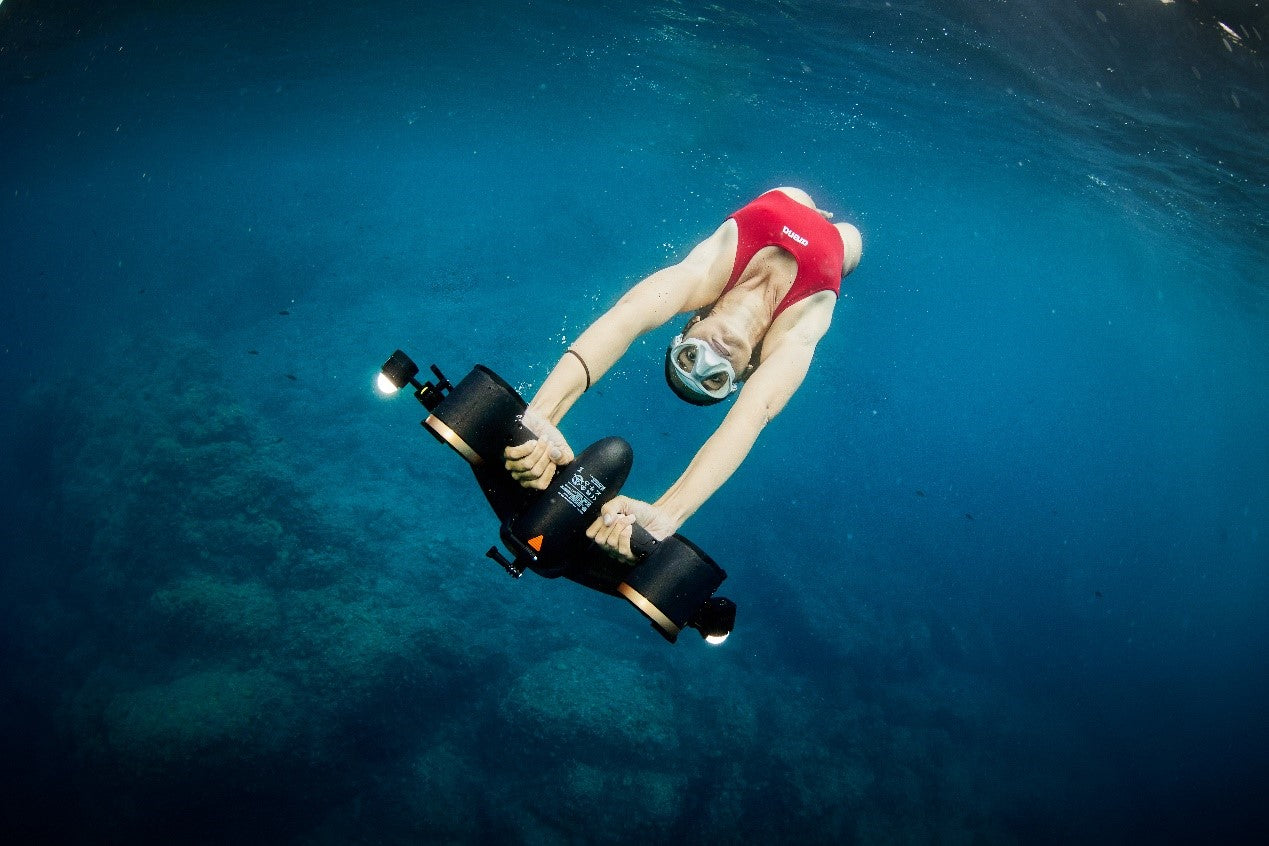
Del:
Den ultimative guide til at udstyre din yacht med de nyeste uundværlige vandlegetøj